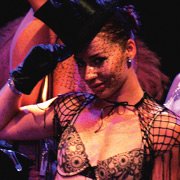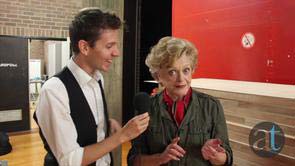Midsumma: Polecats
From its program, Polecats aims to show how the discipline and artistry of pole dancing has “crossed over from the strip club”, but I’m not convinced that it a sport that has moved “away from an exclusively male-centred entertainment”. This aside, the most serious flaw of the piece was that it was often rather dull.

While the performers all showed great strength and control, the choreography and characterisation held little excitement and they are nowhere near the league of vignettes produced by talents such as Hamish McCann or the explosive Wau Wau Sisters in last year’s La Soiree.
To someone without knowledge of the discipline, the moves from different routines often looked similar and were performed to a similar tempo giving the show periods of sameness. It may be that like Olympic gymnastics, that the casual observer needs to know what to look for to appreciate the differences in techniques. However, on that point, no one ever gets enough respect for making a skill look easy, and maybe the design could help demonstrate just how hard the performers were working.
Polecats has obvious potential, but it feels like it mashed together a bunch of promising ideas without developing them. A scene where dancers wear bright lights around their legs and perform a floor routine in darkness is novel, but having the performers remain unlit for their entire pole routine conceals all of the skill required to make the lights glide through the air.
I thought this show was intended to liberate performers from objectification by their audience AND would focus on the skills of the dancers, and their enjoyment of their own capabilities. There were some scenes where this was the case, including a memorable scene where a ballerina appears to dance for her own enjoyment, but frequent looking at the audience, seemingly for approval, moves the performer back to attending to our interests. If I wasn’t already skeptical about this feature of the show, it’s conclusion only heightened my uneasiness. The five dancers removed bras to dip their breasts in glitter and ascend their poles to pose. Reducing the pole to a prop was an especially weak conclusion. I wouldn’t have guessed that this represents “unity” between the dancers and “an image of both death and transcendence” unless I had read it in the program. Whatever story there is in this piece might be clear to the creators, but it doesn’t clearly communicate these intentions to an audience and doesn’t move it far “beyond the strip and burlesque”, as it claims to

